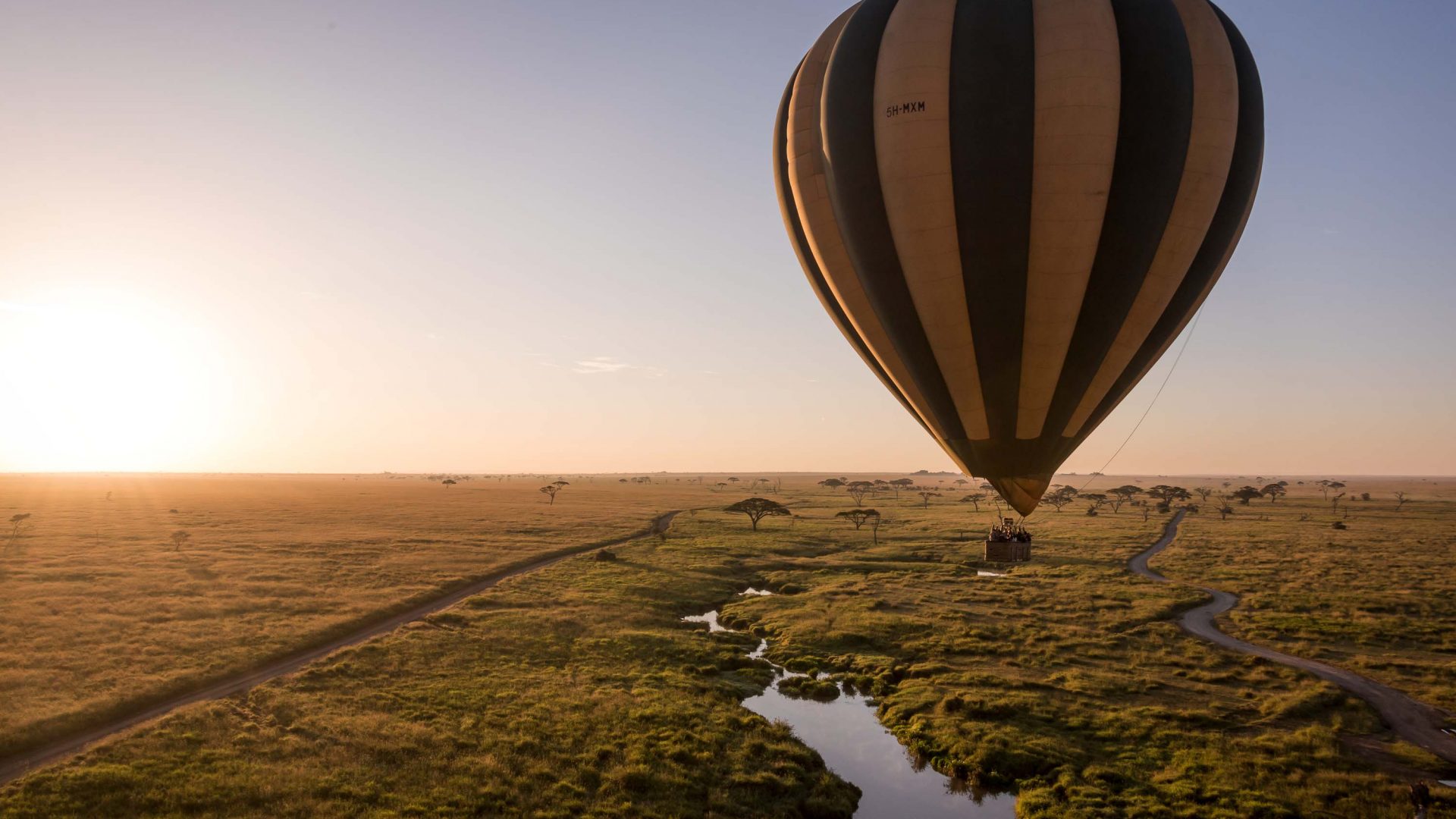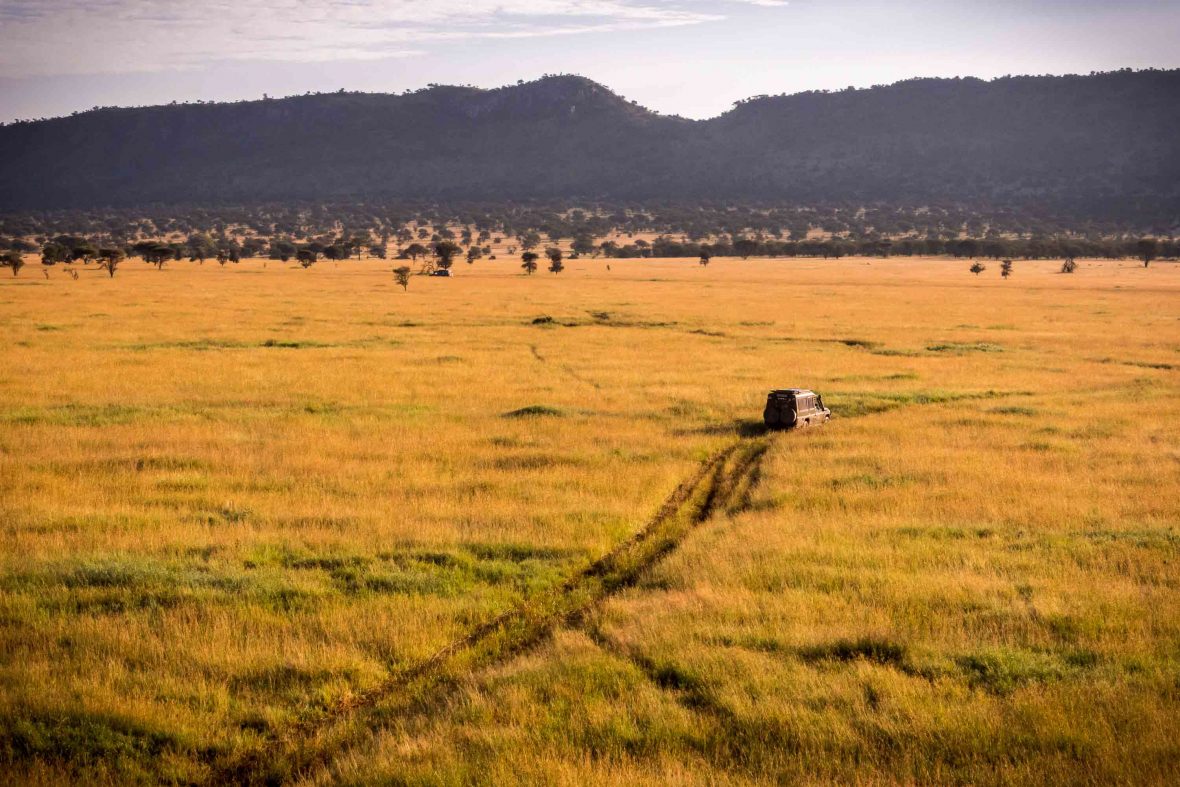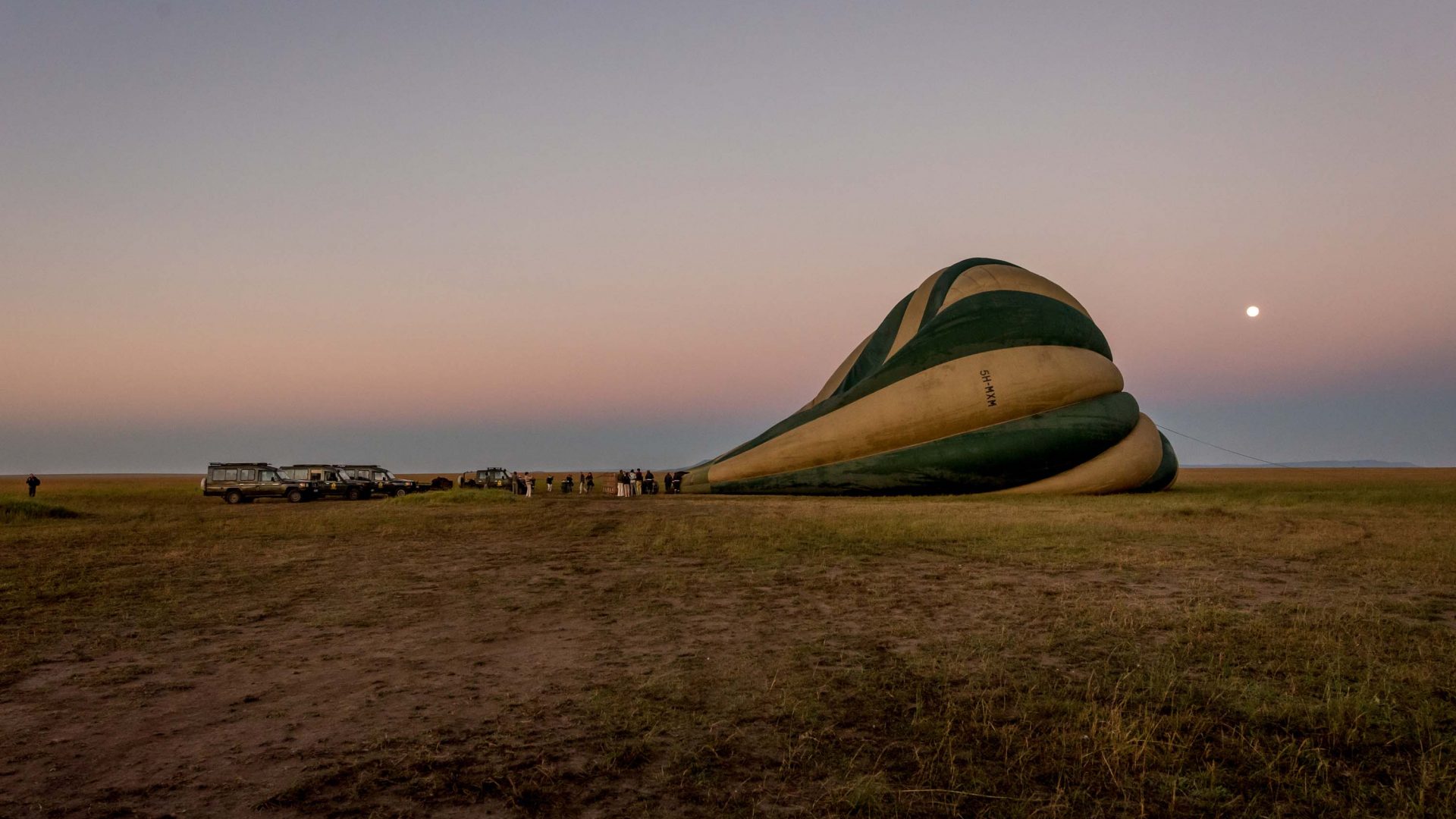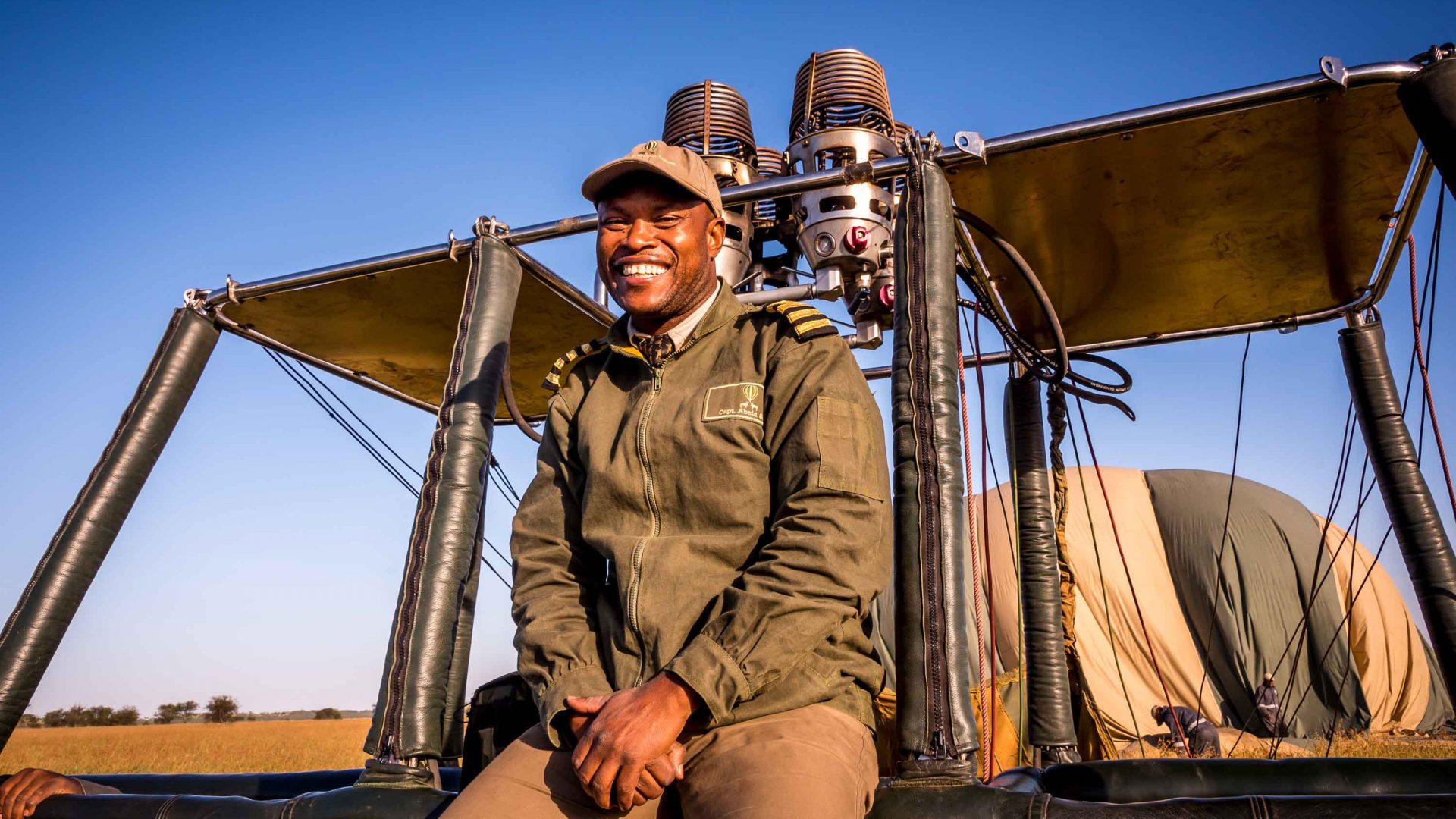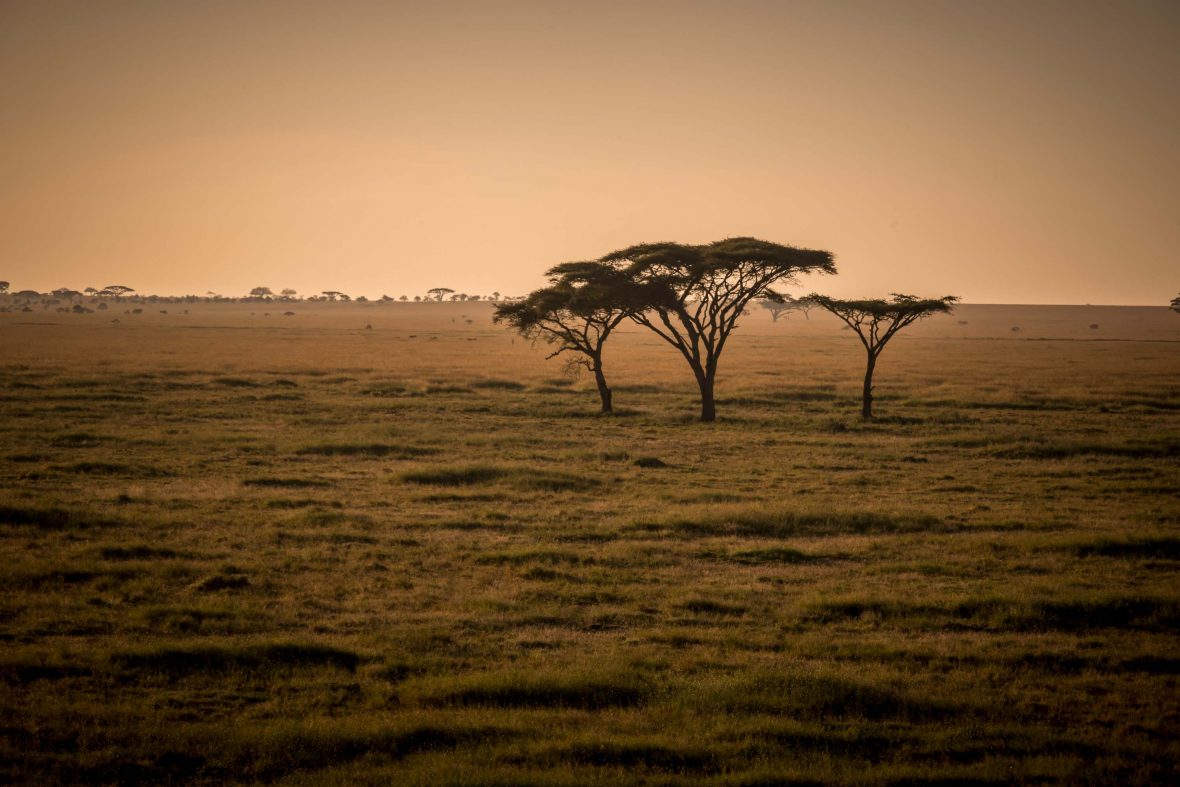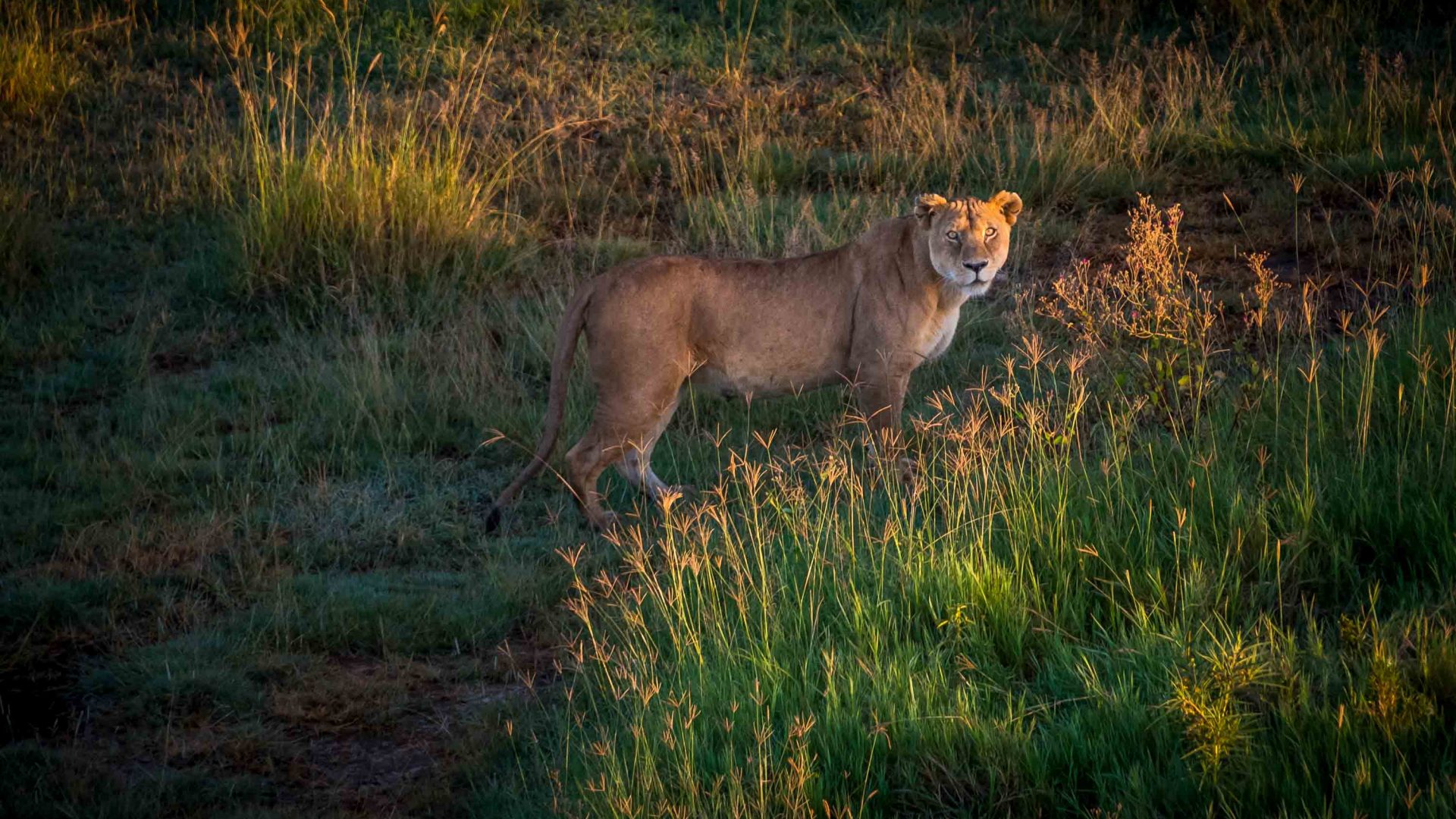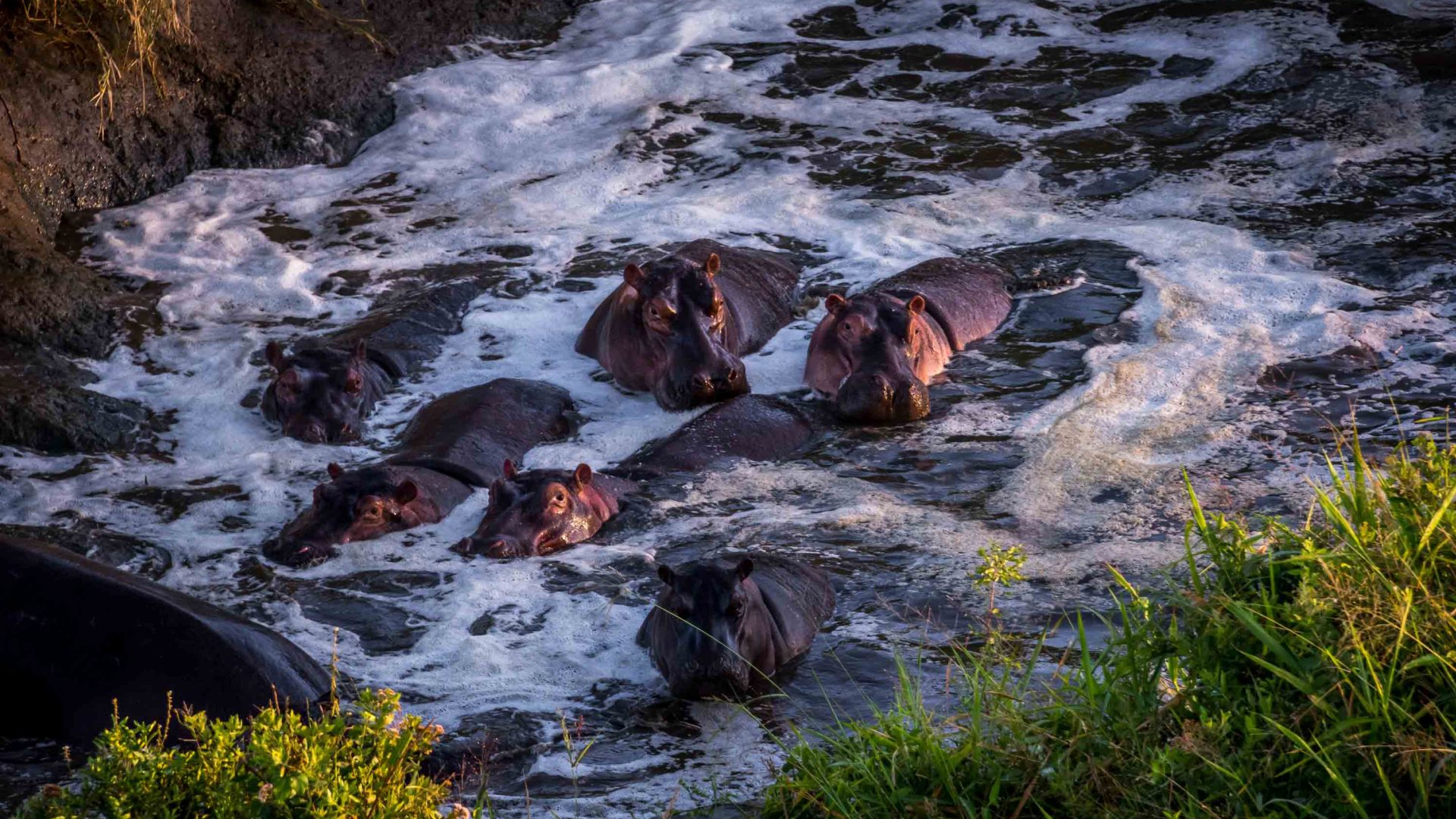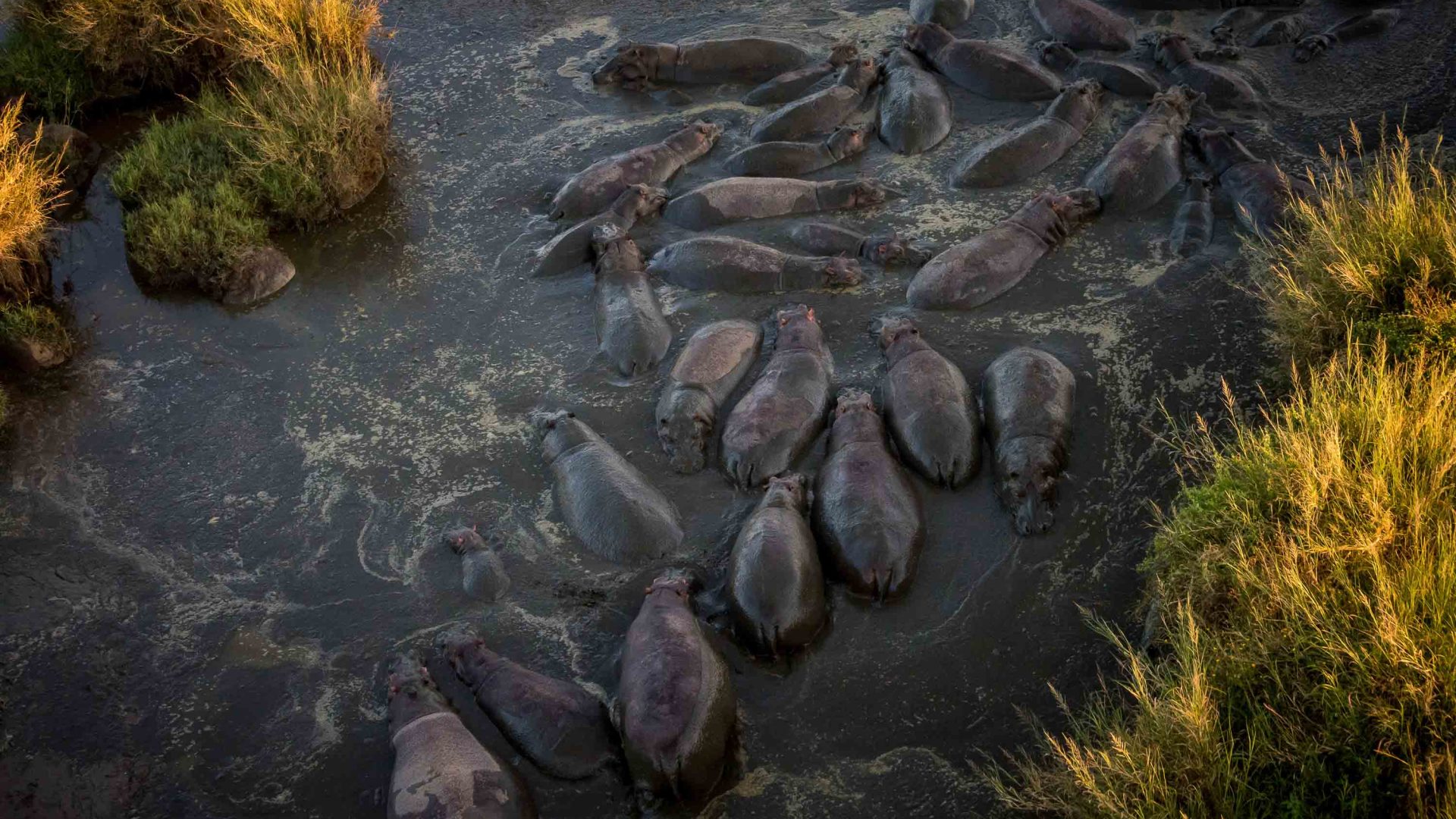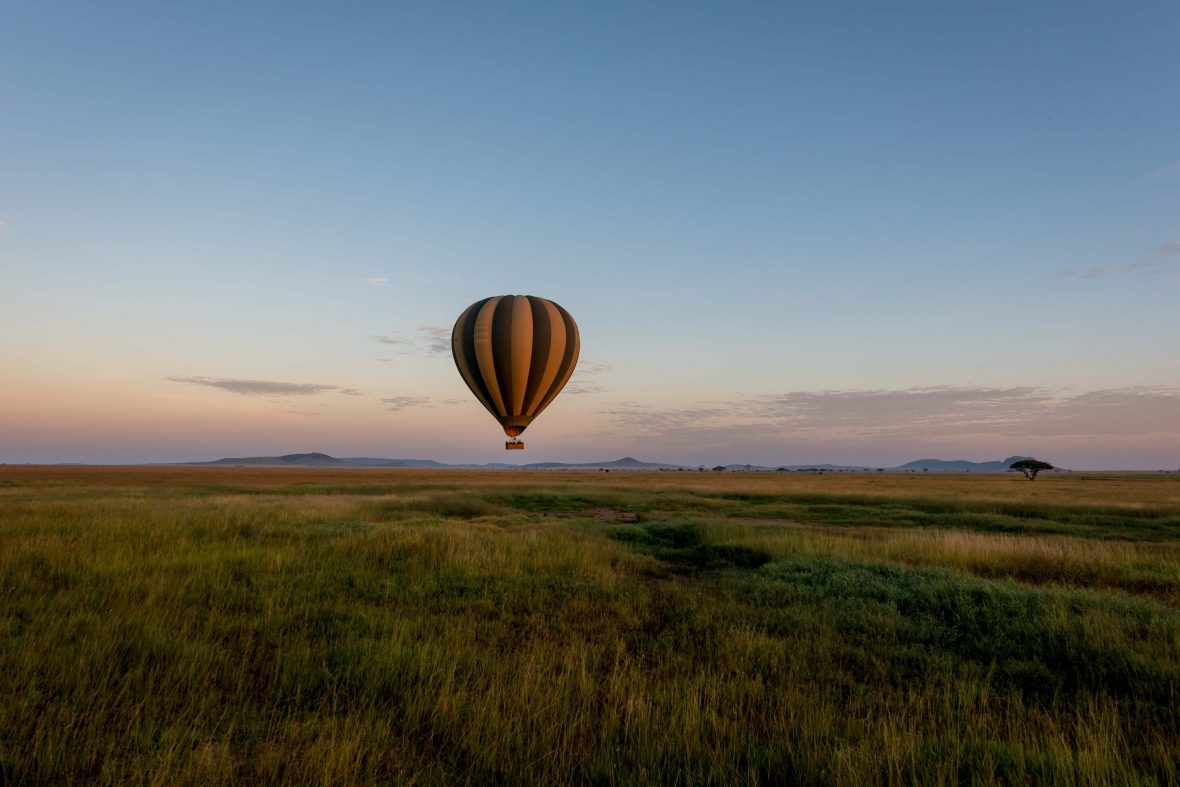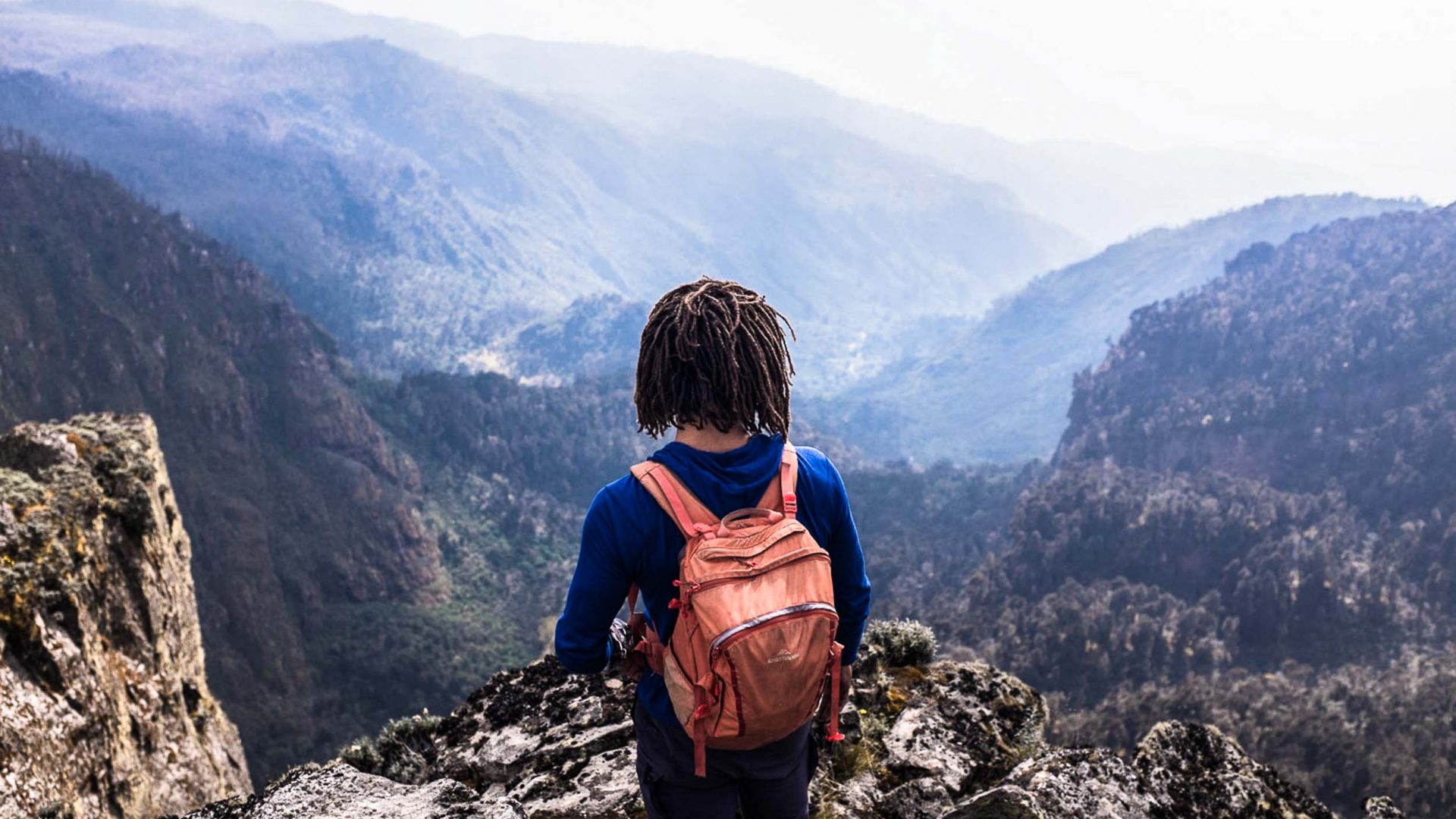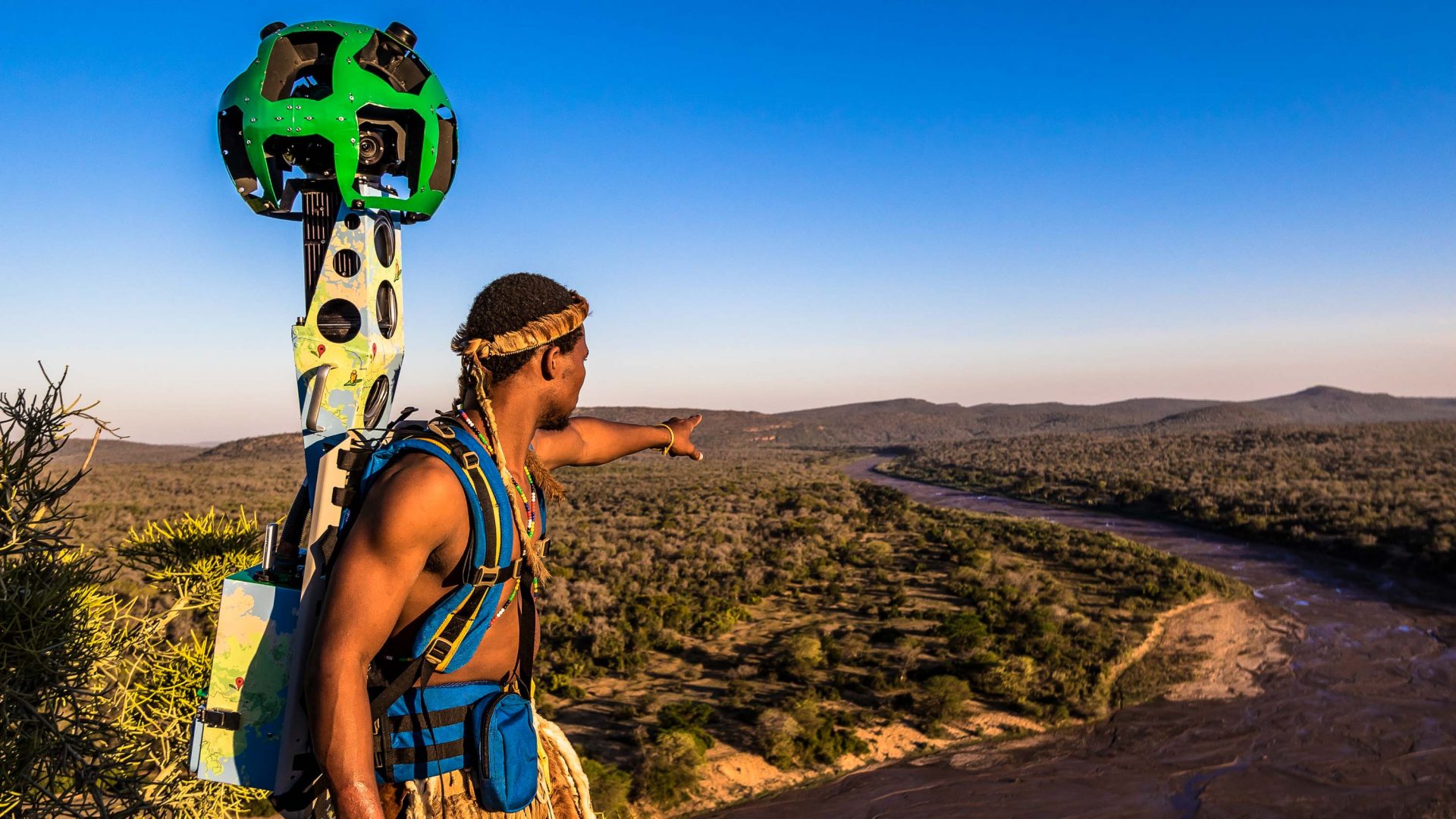One of Africa’s most famous national parks, Tanzania’s Serengeti has always attracted wildlife-seeking travelers. But only a few have seen it from the sky. And featured contributor Lola Akinmade Åkerström is one of them.
I have never seen an animal with such stamina. Three kilometers down a dusty dirt road and the hyena in front of us is still running. Our jeep slowly follows the scavenger as quietly as heavy tires crushing pebbles allow. It is barely dawn and we are heading towards Gurumeti River—the launch site of our hot air balloon ride.
The ink-black darkness hides the danger lurking within the tall savannah grass either side of us. The day before, my guide Naftar had casually explained to me that the serenity that comes from watching this grass swaying softly in the breeze was deceiving. If I left his jeep, I’d be dead in less than 10 seconds, he assured me.
I was on a private game drive right in the heart of Africa’s most famous national park. Stretching across a mind-boggling 14,760 square kilometers, it’s no wonder that local Maasai tribes named this golden savannah ‘Serengeti’—the name translates to ‘endless plains’ in Swahili.
RELATED: Welcome to Africa’s secret summits
In 1956, it was designated a UNESCO World Heritage Site, and with over six million wildebeest and hundreds of thousands of zebra and other indigenous wildlife, Serengeti National Park is where your chances of sighting all Big Five in close proximity—lion, elephant, buffalo, the elusive leopard, and even rarer rhino—are pretty high. The panorama is a curious mix of sturdy acacia trees, rocky outcroppings crawling with rodent-like hyraxes, and long blades of bush that hide hungry predators very well.
However, the biggest draw to this part of northern Tanzania is the wildebeest migration which happens every spring and autumn. To fully appreciate these flat plains, I knew I needed to head up high.
I watch the group mill around absentmindedly, and I glance at the obstructing bush surrounding us all, wondering what lurks there, watching us in the dark, marking and tagging, and looking for the weakest to attack. I quickly move closer to the group.
RELATED: Meet the man who walked the length of Africa
Serengeti Balloons has been flying hot air balloons in the country since 1989, and Captain Abeid Soka greets us with a large smile which seems a tad too perky for this hour. As our ‘acacia green’ and ‘savannah gold’-colored balloons are being inflated for take-off, Captain Soka gives us a safety briefing. The chances of going up in a fiery ball and plummeting into the midst of a hungry pride of lions are slim to none. Personally speaking, that is the only briefing I need. Everything else—strapping in for boarding and bracing myself for landing—feels like bonus information.
The balloons are made from recyclable materials such as bamboo, timber and stainless steel, and the gas they use is classed as a green fuel. Old baskets are donated and have been repurposed into everything from a kid’s climbing playground to a chicken coop.
A large mass of muddy brown waters comes into view, filled with several pods of hippos rolling around—from this elevation, they resemble chocolate-covered maggots. Our basket roars as Captain Soka flies us lower and the hippos roll around even more, startled by our low flyover. I keep snapping until it becomes pointless and I put my camera away. Giraffes emerge from behind acacia trees and prance along gracefully. Ostriches appear out of nowhere and strut along. We watch our jeeps chase our balloons, kicking up dust in their wake as they race alongside us down below.
Except, I don’t really hear them. This distance from the animals and the noise at ground level makes me feel like I’m floating in a dream. And this is the moment when I fully understand why hot air ballooning above the Serengeti remains one of life’s most affirming experiences.
Beyond the occasional rumble of the flames, we float serenely over that never-ending stretch of savannah. When we finally land, it is back into a world which, for a short while, fell completely silent.
––––
